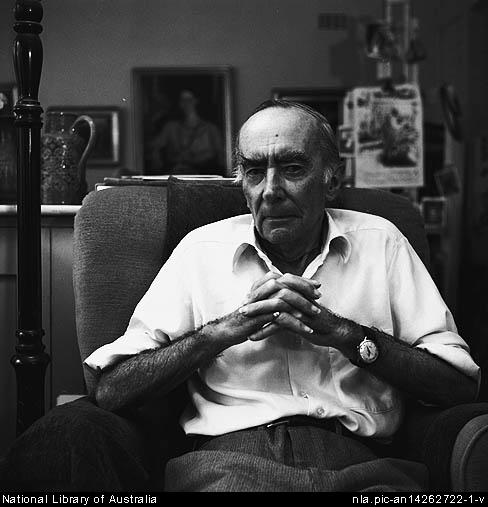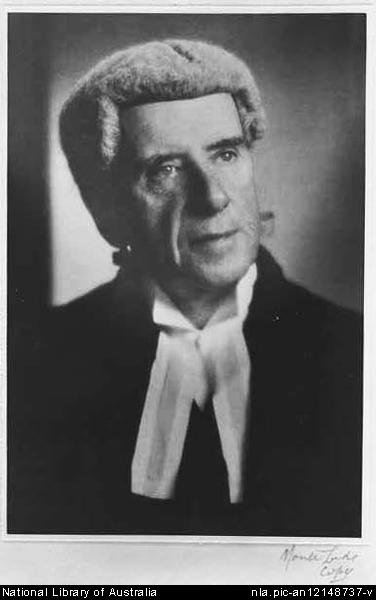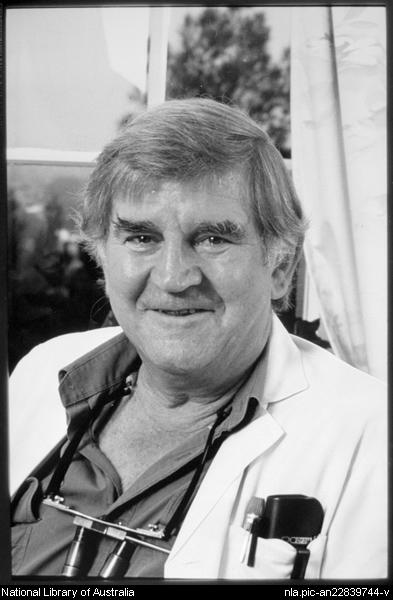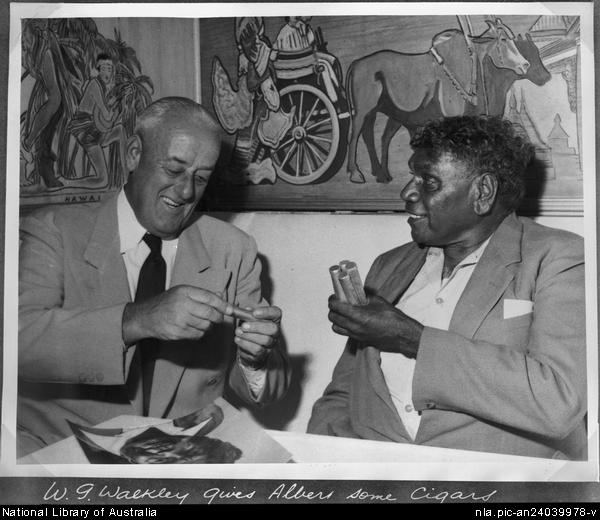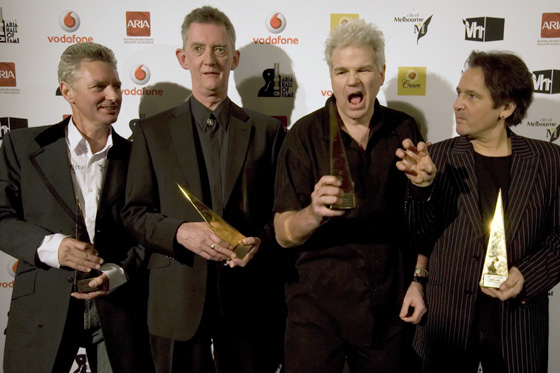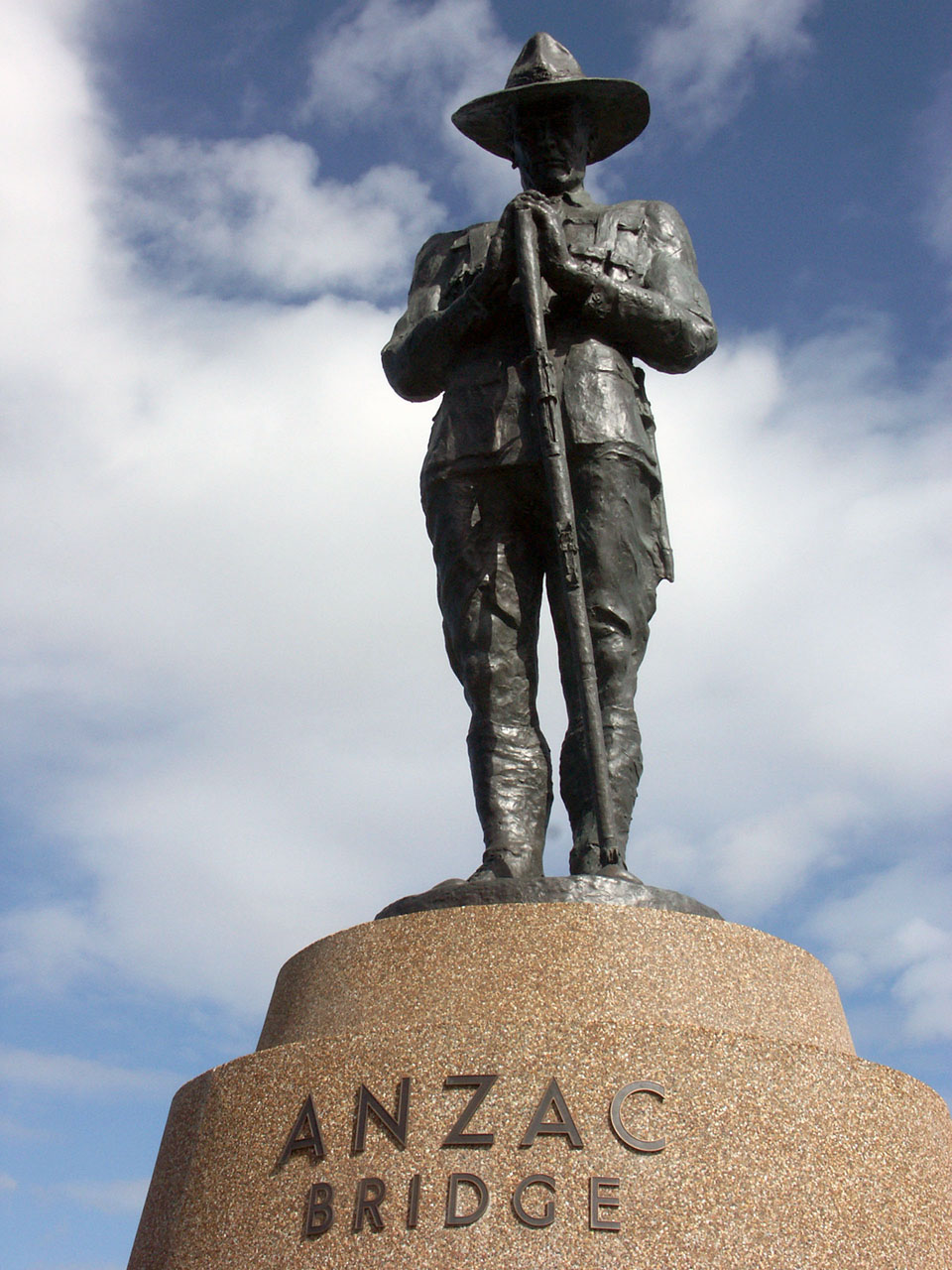The Dictionary of Sydney was archived in 2021.
New Zealanders
Citation
Persistent URL for this entry
To cite this entry in text
To cite this entry in a Wikipedia footnote citation
To cite this entry as a Wikipedia External link
New Zealanders
The trans-Tasman relationships between Sydney and New Zealand, and in particular Auckland and the Bay of Islands, go back even before permanent European settlement occurred in Aotearoa. Whalers and sealers, timber- and flax-getters, runaway convicts and, above all, missionaries from Sydney created a strong, if fluctuating, relationship between the New South Wales metropolis and the North Island frontier of New Zealand.
Close early ties
Sydney treasury officials provided New Zealand's financial administration. Governor Richard Bourke appointed James Busby, pioneer Sydney wine-grower, as Vice-Consul to the Bay of Islands, 'hellhole of the Pacific', in 1832. Governor Gipps assumed jurisdiction over British interest in New Zealand on 15 June 1839 until 3 January 1841 when, under Hobson, New Zealand became a Crown colony in its own right, independent of New South Wales. In the best Sydney tradition, entrepreneurs and land sharks attempted to exploit New Zealand's resources. Meanwhile evangelical clergymen of the Church of England were led to New Zealand by the Reverend Samuel Marsden, who not only conducted the first Christian service in New Zealand in the Bay of Islands on 25 December 1814, but until his death in 1839 alternated between Sydney and New Zealand.
Nor were Marsden's voyages unusual. 'Ringbolting' between Sydney and Auckland and vice-versa was a euphemism for wanted criminals hiding aboard the trans-Tasman steamers which, until the arrival of air travel, were the major means of travel and communication. [media]Later, only the wealthy could afford the flying boat services between Sydney's Rose Bay and Auckland's Mechanics Bay on Waitemata Harbour. Then, too, a 'trip to Sydney' or Auckland was a coded phrase for middle-class women seeking abortions in both cities. Later, when divorce became easier in New Zealand after 1968, men often 'shot through' to Sydney in order to avoid maintenance payments.
New Zealand expatriates
New Zealanders settling in Sydney over the past 150 years were driven by a desire to experience Sydney's often higher standard of living and material comforts, its demand for talent, and its practical opportunities. New Zealand's education system for many years produced an excess of professional talent, people who were not always comfortable with the conformist, socially restrictive, welfare state that prevailed at least until the 1990s. Sydney's universities, schools, magazines, newspapers, and engineering and construction corporations all benefited from these expatriates. Sydney continued to transmit talent to Great Britain and the United States, as did New Zealand, but Sydney remained the final destination of most Kiwis although, increasingly, New Zealand retirees gravitated to the warmer coastal climes of south-east Queensland, and young workers to the mining and construction areas elsewhere in Queensland and Western Australia.
A mention of all prominent expatriates would be an impossible task, but certain New Zealand individuals' contributions to Sydney's human fabric stand out above the pack.
Literature and bohemia
[media]The Bulletin employed Douglas Stewart as literary editor of the 'Red Page'. He was Angus & Robertson's publishing editor throughout the 1960s and a fine poet and dramatist. Earlier, Arthur H Adams had also been editor of the 'Red Page' as well as the Sydney Sun , the Lone Hand and the Bulletin, and was also a powerful yet neglected novelist. Other New Zealand-born residents of Sydney were the tragic novelist Eve Langley ( The Pea Pickers); the controversial activist Jean Devanny ( Sugar Heaven, 1936); the Kings Cross bohemian and leopard-skin wearer Dulcie Deamer; the senior master of Newington and headmaster of Scots College and New Zealand war novelist Guthrie Wilson ( Brave Company); and Ruth Park, the renowned novelist of inner Sydney ( The Harp in the South, Poor Man's Orange) and author of the classic children's story, The Muddle-Headed Wombat.
The macabre painter and occult witch Rosaleen Norton was also a New Zealander, as was George Finey, a scarifying existentialist novelist ( Final Things, The Faces of Sappho) and eclectic caricaturist and artist, who eventually left Sydney – 'the garbage can' – for Springwood in the Blue Mountains. Other contributors to the Sydney cultural scene include composer and professor of composition at the Sydney Conservatorium of Music, Alfred Hill; film writer and director Jane Campion; the television scriptwriter Ray Harding ( Neighbours, A Country Practice, Home and Away); and FE (Eric) Baume, writer, editor and war correspondent. The son of a trans-Tasman shipping captain, Jack Davey was a popular radio quiz and variety host with his trademark, 'Hi Ho! Everybody!'
[media]Other New Zealanders living in Sydney made distinctive contributions to Australian intellectual life. One was the great collector and bibliographer of Australian and Pacific history, Sir John Alexander Ferguson. Another was Sidney John Baker, the pioneering philologist responsible for The Popular Dictionary of Australian Slang (1961) and The Australian Language (1945, 1966). Yet another was Charles Bateson, author of The Convict Ships (1959) and Gold Fleet for California (1963).
Education and music
The clergyman and actor CT Parkinson was innovative and a moderniser at the King's School, North Parramatta, until forced out by conservative staff and parents. The New Zealand-born foundation professor of the Sydney Conservatorium of Music, Francis Hutchens, lasted longer, as did Desmond W Crowley, the Director of Adult Education at the University of Sydney and the editor of the Current Affairs Bulletin . Gladys Everett was an influential headmistress of Abbotsleigh School for Girls.
[media]New Zealand academics have always been prominent in Sydney, although relative numbers have declined as opportunities grew elsewhere and at home. In the 1990s there were over 70 tenured New Zealand academics in Sydney universities. Prominent trans-Tasman figures included Sir Charles Watson-Munro, the plasma physics pioneer; Professor Jim Piper, an applied laser specialist; and perhaps the best known of all, the humanitarian ophthalmologist, Professor Fred Hollows.
The chief engineer of the Australian Atomic Energy Commission GCJ Dalton, wool technologist and geneticist Professor PR McMahon, and the founding president of the Royal College of Pathologists and secretary general of the Australian Medical Association, Edgar F Thomson, were also New Zealand-born.
Public service and politics
Few New Zealanders entered the New South Wales bureaucracy, but WG Hayes-Williams was a creative Registrar-General between 1898 and 1927. The Labor premier RJ Heffron was a New Zealander, as was EV Elliott, the powerful Communist leader of the Seamen's Union, and the barrister and conservative premier Sir Thomas Bavin. 'Mick' Fowler, seaman, Communist, jazz musician and free band pioneer was also Aotearoa-born.
New Zealand-born architects and town planners attempted to put their garden city and greenbelt ideas into practice in the Sydney basin. [media]John Percival Tate was the chairman of the abortive Cumberland County Council, 'betrayed' by politicians, local authorities and land speculators. He was a member of the Sydney City Council from 1947 to 1956 and a senator between 1949 and 1953.
Industry
[media]Industrialists born in New Zealand but manufacturing in Sydney were TE Pearson of 'Solvol' sand soap fame; Sir William Walkley, the founder of the AMPOL petrol chain and the originator of the Walkley Awards for journalism; and Sir George Davis, gelatine manufacturer and chairman of the Cockatoo Docks and Engineering Company Ltd and the Glen Davis shale oil distillery at Newnes.
Two New Zealand-born Australian Imperial Force Victoria Cross winners, PV Storkey and AJ Shout, made Sydney their home while the highly decorated RAAF pilot and Qantas senior captain Keith Thiele was prominent in aviation and boating services. On another level, the founding pastor of the multi-million dollar Sydney evangelical church, Hillsong, was another New Zealander, Brian Houston.
From individuals to mass migration
The migration of New Zealanders to Sydney has passed through several phases, mirroring economic, social and personal changes in the two places. Although prominent individuals have long chosen to cross the Tasman to the Australian metropolis, it was not until the late 1960s, when New Zealand began to suffer an economic downturn as primary export prices declined and unemployment rose, that a sustained and large-scale population loss from New Zealand to Australia began. Young Kiwis, attracted by cheap airfares and the bright lights of Sydney, clustered in large numbers at Bondi and Cronulla, while increasing numbers of workers sought the higher wages of Sydney's construction and housing boom. Then, too, Vietnamese and Pacific Islanders, who had acquired New Zealand citizenship, increasingly began to cross the Tasman to Sydney. The introduction of visas was an attempt to control this backdoor flow. Most were young adults, often engaged in family formation in Sydney, although increasing numbers gravitated to the mining areas and the retirement complexes of Queensland's Gold and Sunshine coasts.
Other occupational group members who migrated in increasing numbers to Sydney included sportspeople (particularly rugby league and rugby union players), performing artists and hospitality industry employees. [media]The rock groups Split Enz, Crowded House and Dragon were also of New Zealand origin.
By 2000, there were 375,000 New Zealand-born residents in Australia – 8 per cent of the entire overseas-born population. In 2001 there were 81,963 New Zealanders living in the Sydney Statistical Division (Metropolitan Sydney). Roughly one-third of all New Zealand-born Australian residents live in Sydney, mainly in the eastern suburbs and the inner-city areas of Kings Cross, Darlinghurst and Elizabeth Bay. New Zealanders also live in the upper north shore districts of Warringah, North Sydney, Manly, Ku-ring-gai, Hornsby and Baulkham Hills, as well as the inner west and western suburbs.
New Zealand returned soldiers have continuously participated in the Sydney Anzac Day march. The contingent is composed of both residents and trans-Tasman visitors. [media]This historical relationship was cemented in April 2008 by the erection of a large sculpture of a New Zealand World War I digger as a companion to the Australian soldier on the Anzac Bridge at Pyrmont. The sculptor Alan Somerville is a New Zealand-born Sydney resident.
References
R Arnold, 'The dynamics and quality of trans-Tasman migration, 1885–1910', Australian Economic History Review, vol 26 no 1, 1986, pp 1–20
WD Borrie, 'The peopling of Australasia, 1788–1988: The common heritage', in K Sinclair (ed), Tasman Relations: New Zealand and Australia, 1788–1988, Auckland University Press, Auckland NZ, 1987, pp 202–03
GA Carmichael (ed), Trans-Tasman Migration: Trends, Causes and Consequences, Australian Government Publishing Service, Canberra, 1993
RJ Lowe, Nga Māori Ki Ahitereria: The Australian Māori Population, New Zealand Planning Council, Wellington NZ, 1990
M McCaskill, 'The Tasman connection: Aspects of Australian–New Zealand relations', Australian Geographical Studies, no 20, 1982, pp 3–23
CA Price, 'Trans-Tasman migration: An Australian viewpoint', in I Pool (ed), Trans-Tasman Migration: Proceedings of a Workshop on Population Flows between Australia and New Zealand, Population Studies Centre, University of Waikato, Hamilton NZ, 1980, pp 66–104



